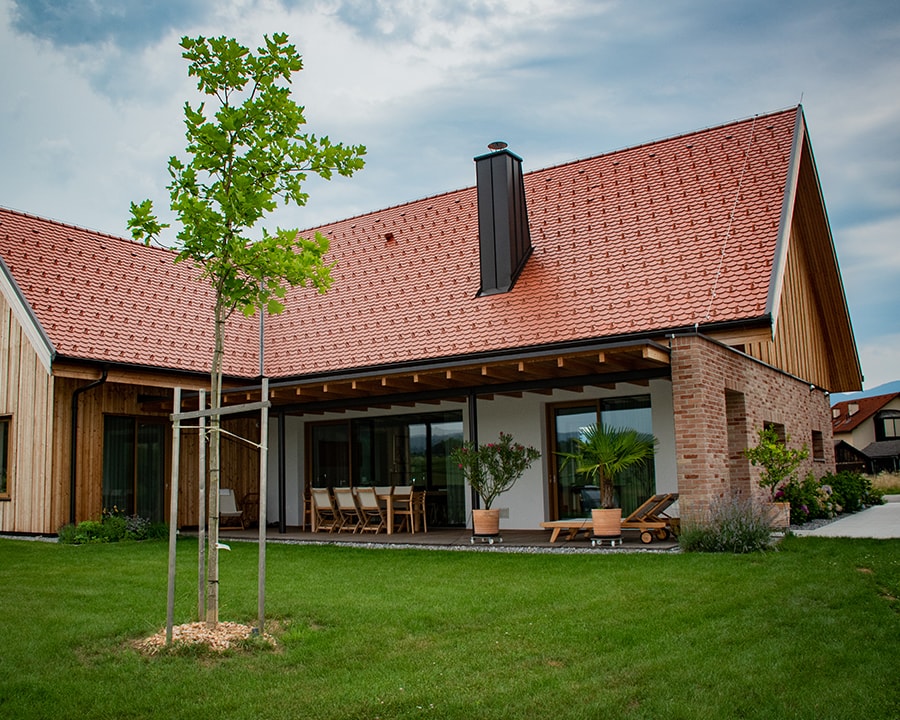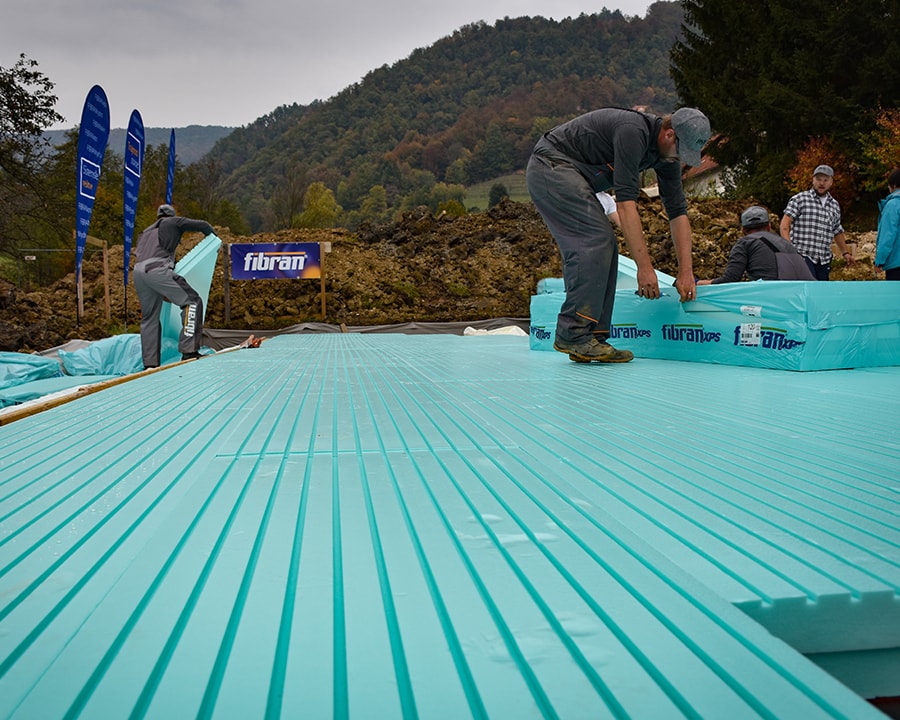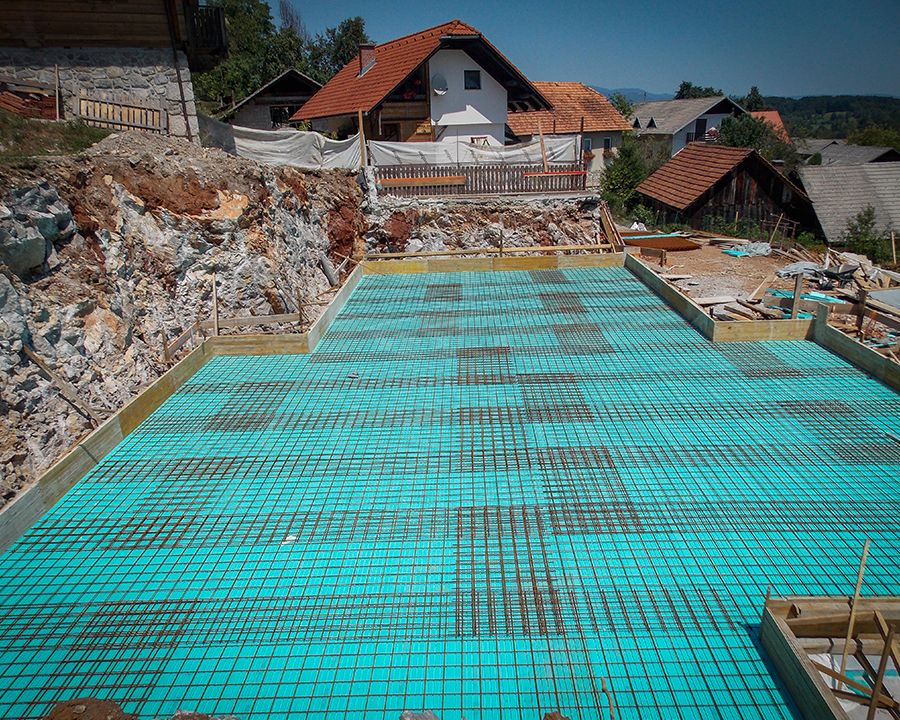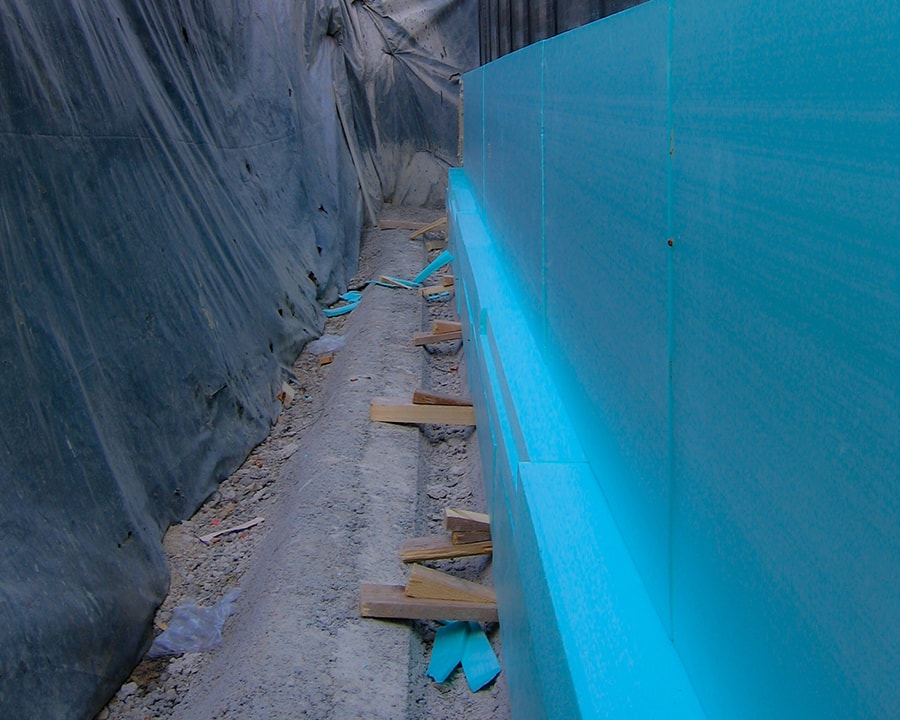FOUNDATIONS
Foundations are structural elements which transfer the building's load onto the load-bearing ground.
To prevent the building from tilting or cracking from unexpected or uneven settlements, the building's load must be evenly transferred onto the ground. The appropriate type of foundation is determined by the buildings's individual design and the type and load capacity of the ground. However, foundation type also affects the design of the building's thermal envelope, as with point or strip foundations, the load transfer is far less uniformly distributed than with the foundation slab.
While traditionally, shallow strip or point foundations were used, energy efficiency directives now dictate the use of the foundation slab, as it enables the construction of a continuous and uninterrupted thermal envelope. Besides preventing the formation of thermal bridges and consequent mold, the foundation slab also minimizes thermal losses at problematic joints.
The foundation pillow – a way of thermally insulating the foundation slab from below - is gaining more and more popularity. Not only does the foundation pillow enhance the foundation slab's stabilizing function during earthquake shocks, it also prevents water and radon gas from entering into the building.

SOLUTIONS FOR FOUNDATIONS
Below, some foundations solution in line with the energy efficient construction trends are featured. Both SEISMIC foundation pillow and foundation pillow are solutions designed for the foundation slab. Strip and point foundations must be handled quite differently.



